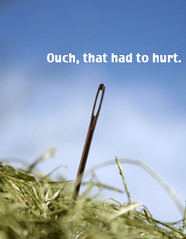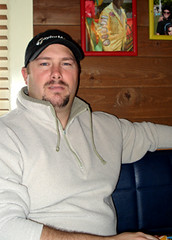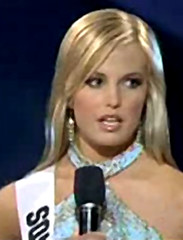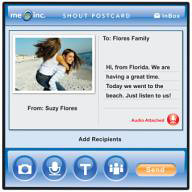Notable and award-winning chef Clive Berkman may have come to expect cooking for presidents and celebrities at Charley’s 517 and later Clive’s in Houston, but he never expected to cook up an online contest for his upcoming book Cooking With Clive, Creating “Empty Bottle Moments” With Those You Love.
The contest, which runs through June 15, invites participants to pick 20 pictures from more than 250 featured on his Flickr account. Whoever selects the most photos that will appear in the book will win a seven-course meal for 20 people, prepared by Berkman anywhere in the continental United States.
“I am hoping the winner lives in an area that has tons of fresh meat and locally grown vegetables,” says Berkman. “Then I can work with them to make a menu with local products like lobsters in Maine for a sake curry soup or lamb in Colorado with rosemary and corn polenta.”
Originally, Berkman had set up the Flickr account as a way to share the photo shoot with his friends and family. But as other people started to visit, he decided that he might as well share it with more people. So on March 24, Berkman announced the contest on a blog that he started in April.
“I could have started blogging last summer,” Berkman said. “But I did not want to ramble on about nothing for no reason at all. So I started about five weeks ago as a simple way for people who are interested in my book to stay up to date.”
Adding one-minute video segments on YouTube happened much the same way. He originally wanted to produce a 4-minute DVD that he could send to speakers bureaus and the media, but decided to try producing one-minute video segments in order to reduce production and distribution costs instead.
“We filmed 25 one-minute videos that are unrehearsed and definitely not-scripted,” says Berkman. I didn’t want show glitz as much as authenticity. That way people can see me as an author who wants to share his reflection of a book.”
The first video, which is a trial demo, features Berkman sharing his disdain for green peppers. While not as popular as his Flickr images, it does provide a true-to-life glimpse of who this Johannesburg, South Africa, native really is — someone with a passion for life and food that began while watching his mother teach cooking classes in the back of their home.
His mother wasn’t his only inspiration. Berkman also had the pleasure of working under noted chef Victor Broceaux, best known for his work at The Four Seasons, Forum of the XII Caesars, La Fonda del Sol, and Tavern On The Green.
“He pushed me every day to be my best,” says Berkman. “But although I was grounded in classic French, my style cannot be only described in one word.”
Like some seasoned chefs, Berkman prefers to present an eclectic approach to cooking by finding the best ingredients available and then creatively combining them into something special and cooking them with the best techniques.
While he is still motivated and inspired by standards set in New York, the recipes in his book are simpler and more user friendly. The idea is not to simply give people specific recipes, about 100, but to also share his passion by reminding people that every meal is an opportunity to create a unique moment with loved ones.
“I truly believe that if we pursue creating moments with our loved ones, it can strengthen our relationships,” Berkman said. “Eating together is designed to bring people together, which is where the subtitle of my book comes from.”
The subtitle, which references Empty Bottle Moments, refers to how decorative glass bottle collections resemble guests at a dinner party. Every bottle may be unique, but together they create a celebratory visual metaphor for people.
“I tell [people] that in a sense, we’re all in the kitchen because it’s a symbol of life, full of joy and spills, glorious successes and burnt dishes, tender moments and unnerving chaos,” Berkman includes in his book. “We’re all in the process of learning, growing, and laughing with each other. It’s there that we develop our recipes for cooking and for life.”
In addition to New York, some recipes are also influenced by Berkman’s home. He enjoys sharing these recipes because people are often surprised to discover South African food includes hints of Dutch, British, Portuguese, Indian, and Greek cuisine. The 256-page book with approximately 80 full-color photos will retail for $30. For more information about its summer release, visit here.

The contest, which runs through June 15, invites participants to pick 20 pictures from more than 250 featured on his Flickr account. Whoever selects the most photos that will appear in the book will win a seven-course meal for 20 people, prepared by Berkman anywhere in the continental United States.
“I am hoping the winner lives in an area that has tons of fresh meat and locally grown vegetables,” says Berkman. “Then I can work with them to make a menu with local products like lobsters in Maine for a sake curry soup or lamb in Colorado with rosemary and corn polenta.”
Originally, Berkman had set up the Flickr account as a way to share the photo shoot with his friends and family. But as other people started to visit, he decided that he might as well share it with more people. So on March 24, Berkman announced the contest on a blog that he started in April.
“I could have started blogging last summer,” Berkman said. “But I did not want to ramble on about nothing for no reason at all. So I started about five weeks ago as a simple way for people who are interested in my book to stay up to date.”
Adding one-minute video segments on YouTube happened much the same way. He originally wanted to produce a 4-minute DVD that he could send to speakers bureaus and the media, but decided to try producing one-minute video segments in order to reduce production and distribution costs instead.
“We filmed 25 one-minute videos that are unrehearsed and definitely not-scripted,” says Berkman. I didn’t want show glitz as much as authenticity. That way people can see me as an author who wants to share his reflection of a book.”
The first video, which is a trial demo, features Berkman sharing his disdain for green peppers. While not as popular as his Flickr images, it does provide a true-to-life glimpse of who this Johannesburg, South Africa, native really is — someone with a passion for life and food that began while watching his mother teach cooking classes in the back of their home.
His mother wasn’t his only inspiration. Berkman also had the pleasure of working under noted chef Victor Broceaux, best known for his work at The Four Seasons, Forum of the XII Caesars, La Fonda del Sol, and Tavern On The Green.
“He pushed me every day to be my best,” says Berkman. “But although I was grounded in classic French, my style cannot be only described in one word.”
Like some seasoned chefs, Berkman prefers to present an eclectic approach to cooking by finding the best ingredients available and then creatively combining them into something special and cooking them with the best techniques.
While he is still motivated and inspired by standards set in New York, the recipes in his book are simpler and more user friendly. The idea is not to simply give people specific recipes, about 100, but to also share his passion by reminding people that every meal is an opportunity to create a unique moment with loved ones.
“I truly believe that if we pursue creating moments with our loved ones, it can strengthen our relationships,” Berkman said. “Eating together is designed to bring people together, which is where the subtitle of my book comes from.”
The subtitle, which references Empty Bottle Moments, refers to how decorative glass bottle collections resemble guests at a dinner party. Every bottle may be unique, but together they create a celebratory visual metaphor for people.
“I tell [people] that in a sense, we’re all in the kitchen because it’s a symbol of life, full of joy and spills, glorious successes and burnt dishes, tender moments and unnerving chaos,” Berkman includes in his book. “We’re all in the process of learning, growing, and laughing with each other. It’s there that we develop our recipes for cooking and for life.”
In addition to New York, some recipes are also influenced by Berkman’s home. He enjoys sharing these recipes because people are often surprised to discover South African food includes hints of Dutch, British, Portuguese, Indian, and Greek cuisine. The 256-page book with approximately 80 full-color photos will retail for $30. For more information about its summer release, visit here.























